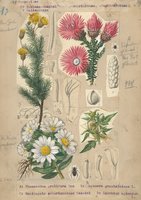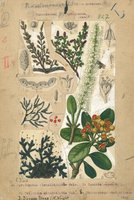| dc.contributor.other | Gruhl, Ernst Friedrich | en_ZA |
| dc.contributor.other | Gruhl (Firm) | en_ZA |
| dc.coverage.spatial | Genadendal (South Africa) | |
| dc.coverage.temporal | 1798-1893 | |
| dc.date.accessioned | 2015-07-03T05:47:57Z | |
| dc.date.available | 2015-07-03T05:47:57Z | |
| dc.date.created | 1870 | |
| dc.date.created | 1893 | |
| dc.identifier.other | genadendal-moravian-church | |
| dc.identifier.uri | http://hdl.handle.net/10019.2/5177 | |
| dc.description.abstract | Photographs and information on the Moravian Church in Genadendal and its bells. The bell on the square has an interesting history. It was delivered at the mission by a farmer Theunis from Zoetenmelksvlei who bought it at an auction. Theunis used to be a subordinate of the VOC but we have been unable to link the bell to the VOC. In October 1792 Theunis was asked by Christian friends from the Cape to buy an old ship’s bell. They found it unbearable that the mission was using a tin one.
The missionaries immediately installed the bell in a wooden frame and invited the parishioners to service. According to some sources, the Stellenbosch preacher Borcherds claimed that the Genadendal bell was disturbing his services. The Dutch Reformed Church insisted that the bell should be silenced, which happened for a number of years. Unfortunately, the simple bell gives us no indication about its origin. Moreover, there is a 12-13 cm crack on the side of the bell. The commemorative plaque on the tower tells us that the bell was placed in position in 1798 after special permission was obtained from the authorities of the Cape.
The plaque also mentions that the church was completed in 1800. Presumably later changes have taken place as is illustrated on the pillar next to the steps on the right of the church. The two magnificent church bells of Friedrich Gruhl are worth special discussion. In the tower of the Moravian Church in Genadendal hang two beautifully cast bells. Both carry statements in the Dutch language. Afrikaans was only accepted as a language in its own right in 1925. The canons of the bells consists of 4 carefully carved angle heads, something like the trade mark of the founders. The foundry of Friedrich Gruhl was situated in Kleinwelka by Bautzen in former East Germany. The larger of the two bells dates from 1870 and has a diameter of about 60 cm. As decorations we find the following: Below a moulding wire we find on the front side a decorative band with flower motifs. Again a moulding wire and then on the waist KOMT WANT ALLE DINGEN ZIJN NU GEREED! LUCAS 14.V.17 KOMT, GIJ ALLEN! KOMT TOT HEM ZONDAARS! KOMT, WAT ZOU U HIND'REN? JEZUS ROEPT U, HOORT ZIJN STEM. HIJ MAAKT ZONDAARS TOT GODS KIND'REN VRIJ MOOGT GIJ TOT JEZUS GAAN: JEZUS NEEMT DE ZONDAARS AAN.
Again a moulding wire and another decorative band with circles. One more moulding wire and a decorative band on the nose. On the rear we find GENADENDAL GEGOSSEN VON FR.GRUHL IN KLEINWELKA BEI BAUTZEN 1870. The smaller bell dates from 1893 and has a diameter of about 40 cm. On the front side below a moulding wire we find a first decorative band with flower motifs. Another moulding wire and then KOMT, LAAT ONS AANBIDDEN EN NEDERBUKKEN LAAT ONS KNIELEN VOOR DEN HEER DIE ONS GEMAAKT HEEFT PSALM 95,6. Again a moulding wire followed by a decorative band with circles. A last moulding wire and another decorative band are found on the nose. On the rear we again find
GENADENDAL GEGOSSEN VON FR.GRUHL IN KLEINWELKA BEI BAUTZEN 1893. It is worthwhile to include some information on the founders. We have been fortunate to get in contact with Helmfried Klotke from Kleinwelka who has made historical investigations on the Gruhl-foundry. The foundry was a family business that ran from 1803 until 1896 and made between 1700 and 200 church bells. Unfortunately information on these bells has been destroyed by a rival founder in 1896. At the moment information on some 700 has been retrieved and the South African bells will definitely make a fine subset.
Even when the dates on the Genadendal bells are 1870 and 1893 it doesn’t mean that Friedrich has been the founder. Friedrich ran the business from 1803 until 1852 when his son Ernst Friedrich took over until 1864. When he died, his wife married the foundry head Theodor Werner who guided the firm until 1882 and again during 1886-1896. In between an uncle Ernst Gruhl took care of the business. Because of the family character of the business, all founders used the “Friedrich Gruhl” label. From the above it is logical that both bells in Genadendal have been cast by Theodor Werner. The link between Gruhl and South Africa is strong and runs via the Moravian Church or the Herrnhuter Brüdergemeine as it is called in Germany. Genadendal was the first mission station of the Moravian Church in southern Africa. Its founder is a German missionary Georg Schmidt who started work among the Khoi people in 1738 in what was then called Baviaans-kloof. Schmidt taught the Khoi to read and write. When he started to baptize his converts he ran in conflict with the clergy of the Dutch reformed Church clergy and left the country in 1744. Some fifty years later the Moravian Church could renew its activities and made Genadendal the cradle of the missionary work. From there the church expanded its operations to other places like Elim, Mamre, Enon, Wittewater, Goedverwacht, etc. Among these locations, also Mamre has bells that have been forged by Gruhl. From pictures stored at the University of California we learned that in 1934 also Enon had a Gruhl-bell. It seems highly probable that that bell there has been imported at the same time as the 1870 bell in Genadendal. A bit of the older history of the mission can be found in Geschied-verhaal van Genadendal, De Eerste Zendings-statie in Zuid-Afrika van 1737 tot 1806, edited in Genadendal, 1893 and printed in Kaapstad by Van de Sandt de Villiers & Co. | |
| dc.format.extent | 13 colour photographs | |
| dc.format.extent | 1 spreadsheet | |
| dc.format.medium | Photograph | |
| dc.format.medium | Text | |
| dc.language.iso | en | en_ZA |
| dc.rights | These items are subject to copyright protection. Reproduction of the content, or any part of it, other than for research, academic or non-commercial use is prohibited without prior consent from the copyright holder. | |
| dc.subject | Genadendal (South Africa) -- Pictorial works | en_ZA |
| dc.subject | Genadendal (South Africa) -- Bells | en_ZA |
| dc.subject | Overberg (South Africa) -- Bells | en_ZA |
| dc.subject | Bells -- South Africa -- History | en_ZA |
| dc.subject | Moravian Church -- South Africa -- Genadendal | en_ZA |
| dc.subject | Gruhl, Ernst Friedrich | en_ZA |
| dc.subject | Gruhl (Firm) | en_ZA |
| dc.title | Genadendal, Moravian Church | en_ZA |
| dc.title.alternative | Genadendal, Moravian Church (Overberg District) | en_ZA |
| dc.type | Image | en_ZA |
| dc.rights.holder | Stellenbosch University | |



